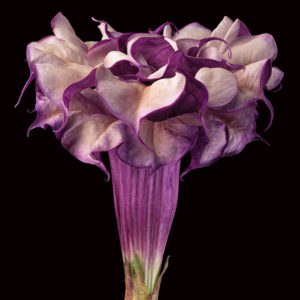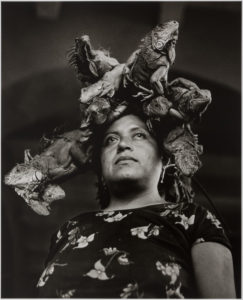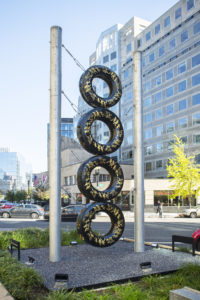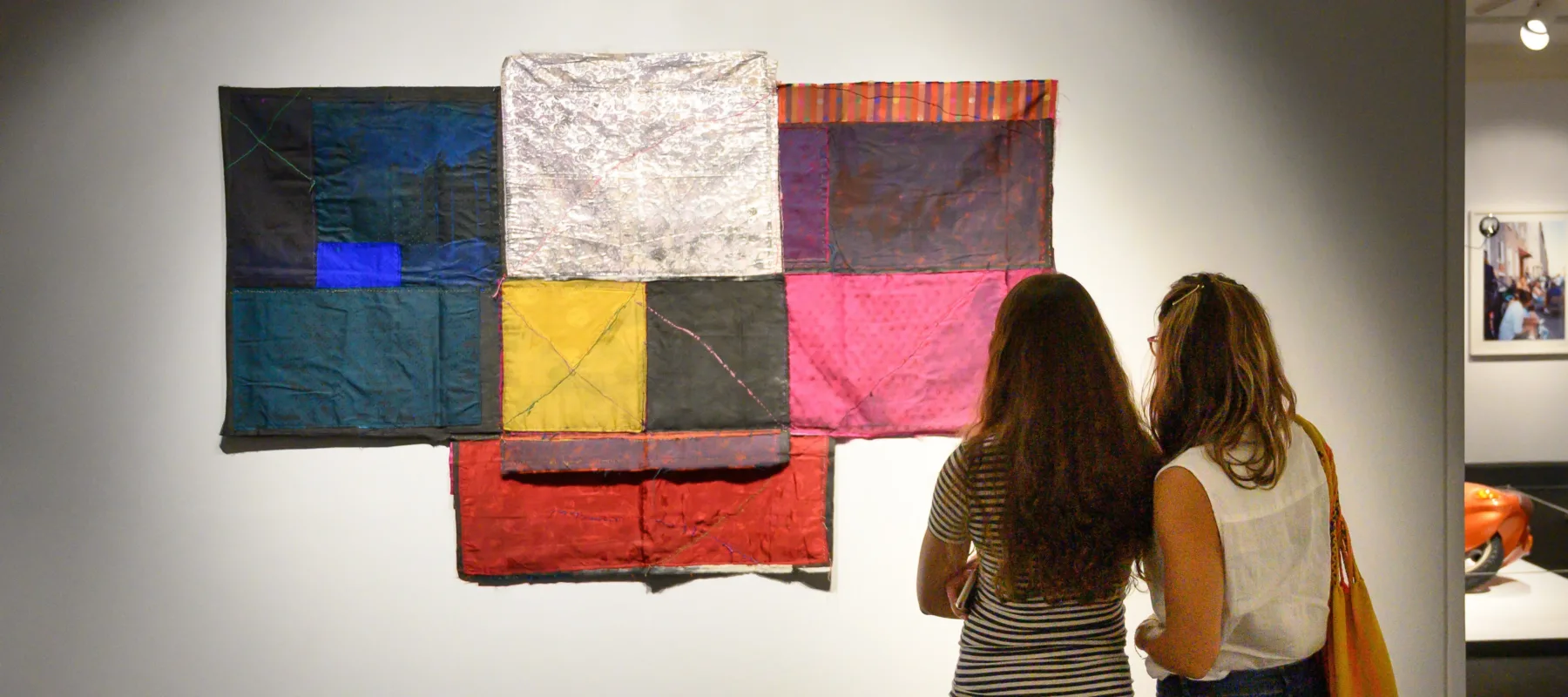WASHINGTON—The National Museum of Women in the Arts (NMWA) reopens to the public on Saturday, August 1. With guidance from the D.C. government, D.C. Health and the Centers for Disease Control and Prevention, the museum has developed new cleaning, safety, health and operational protocols. A maximum of 200 visitors per day are allowed, and advance purchase of a timed ticket is strongly encouraged. On most days, the museum’s hours of operation remain unchanged. Extended hours are planned on select dates. Visitors should check https://nmwa.org/reopening for updated schedule information.
Committed to the well-being of visitors, staff and volunteers, NMWA created an Operations Planning Task Force in April 2020. The group has worked to develop reopening guidelines in accordance with Mayor Muriel Bowser’s Phase 2 reopening plan for museums. The task force is also employing recommendations from the National Institutes of Health, Johns Hopkins Center for Health Security, the American Alliance of Museums and the Association of Art Museum Directors.
“I am looking forward to welcoming visitors back to the museum—socially distanced, with my mask and gloves on, and hand sanitizer by my side,” said NMWA Director Susan Fisher Sterling. “It will be great to have people in our galleries once again. Our collection is beckoning and well worth the visit. We also are gratified to share the exhibition of Graciela Iturbide’s Mexico, which has been extended through August 23, 2020. These poetic and intensely beautiful photographs are an uplifting tribute to the rich and varied cultures of her homeland. We are pleased that visitors will be able to experience all the art in our building in person in a safe manner.”
In-person gallery talks, tours and public programs are canceled for the upcoming months. A short audio guide of key artworks in the collection will be available August 1. In addition, a variety of on-demand digital resources and special programs is available at https://nmwa.org/nmwa-at-home. Visit https://nmwa.org/whats-on/calendar for a schedule of virtual events, including Art Chats with NMWA educators. During Phase 2, the museum is available for event rentals for occasions with up to 50 guests.
Detailed information about schedule changes and protocols for safety, admission and ticket purchasing is available at https://nmwa.org/reopening.
Reopening Guidelines
Ticketing and Hours
- Timed admission tickets and additional information are available at https://nmwa.org/tickets.
- Ongoing public hours: Monday–Saturday, 10 a.m. to 5 p.m. and Sunday, 12 to 5 p.m.
- Special hours: Extended hours from 5 to 7 p.m. are available Wednesday, August 19; Monday, September 14; Wednesday, October 21; and Monday, November 16.
- Early hours from 9 to 10 a.m. are available Tuesdays from August through November for guests 65 and older or with high-risk health conditions.
- Free Community Days: There will not be a free Community Day on Sunday, August 2. Free Community Days resume on Sunday, August 16, and will be held on the first and third Sundays of each month from September through November 2020.
Safety Protocols
- To ensure the safety of visitors and staff, face masks must be worn by staff and visitors at all times. This requirement does not apply to children under the age of 2 or to individuals who are unable to wear a face covering due to a medical condition.
- The Mezzanine Café is closed.
- The Betty Boyd Dettre Library and Research Center is open by appointment only. Email lrc@nmwa.org to schedule an appointment.
- A minimum of six feet of social distance must be maintained at all times. Visitors are asked to observe social-distancing floor markers and signage.
- Enhanced cleaning procedures include regular disinfection of high-touch surfaces such as entrance doors, and washrooms are cleaned frequently throughout the day.
- Hand sanitizer stations are available to visitors and staff.
- Plexiglas partitions are installed at transactional areas.
- Elevators are restricted to one person or group/household.
- Visitor capacity and flow will be monitored for safety.
- Online transactions are strongly encouraged.
- Coat and bag check services are suspended until further notice. Backpacks and bags larger than 16 x 16 in. are not permitted. Bags in excess of 16 x 16 in. containing medical equipment or diaper bags are allowed but must be carried at a visitor’s side.
- Digital alternatives to paper brochures are available at https://nmwa.org/guide, including a gallery guide and See For Yourself self-guide cards.
On View

Spotlight Installation
Return to Nature
Despite the fact that women were integral participants in the development of nature photography, scholars largely ignored their contributions until the 1970s. With work by Imogen Cunningham, Louise Dahl-Wolfe, Rineke Dijkstra, Justine Kurland, Amy Lamb, Ruth Orkin and others, this exhibition of modern and contemporary photographs reflects the extraordinary contributions of women artists. Some treat plant specimens from the perspective of an artist-scientist, while others apply a modernist sensibility, concentrating on line, contour and value contrast. Lush landscapes alternately serve as personal remembrances of distinctive spaces or stages on which models enact intriguing narratives.

Graciela Iturbide’s Mexico
Extended through August 23, 2020
Lyrical and provocative black-and-white images by celebrated photographer Graciela Iturbide (b. 1942) capture the rich tapestry of cultures, daily rituals, social inequalities and coexistence of tradition and modernity across Mexican society. In this major presentation of work from throughout the artist’s five-decade-long career, Graciela Iturbide’s Mexico tells a visual story of the country since the late 1960s. Approximately 140 photographs reveal the lifestyle of the Seri people living in the Sonoran Desert, the exploitation of workers among the Mixtec of Oaxaca, and the vital role of women in Zapotec communities. Iturbide’s empathetic approach to photography reflects her deep connection to her subjects and offers powerful insight into the beauty and complexities of Mexico’s cultural heritage.

New York Avenue Sculpture Project: Betsabeé Romero
Through May 2, 2021
The dynamic works of Mexico City-based artist Betsabeé Romero (b. 1963) form the newest chapter in NMWA’s public art program, the New York Avenue Sculpture Project, established in 2010. Signals of a Long Road Together comprises four sculptures developed expressly for this installation. Using a process similar to tattooing, Romero carves figures and intricate patterns into the sidewalls and treads of tires, which are then filled with gleaming metallic paint. The tires are assembled into totemic structures that speak to themes of human migration and the natural environment. Romero’s sculptures are the first in the New York Avenue Sculpture Project to incorporate interior lighting, which gives each piece an otherworldly glow after dark.
National Museum of Women in the Arts
The National Museum of Women in the Arts (NMWA) is the only major museum in the world solely dedicated to championing women through the arts. With its collections, exhibitions, programs and online content, the museum inspires dynamic exchanges about art and ideas. NMWA advocates for better representation of women artists and serves as a vital center for thought leadership, community engagement and social change. NMWA addresses the gender imbalance in the presentation of art by bringing to light important women artists of the past while promoting great women artists working today. The collections highlight painting, sculpture, photography, and video by artists including Louise Bourgeois, Mary Cassatt, Judy Chicago, Frida Kahlo, Shirin Neshat, Faith Ringgold, Pipilotti Rist, Amy Sherald and Élisabeth Louise Vigée-LeBrun.
NMWA is located at 1250 New York Avenue, NW, Washington, D.C. For information, call 202-783-5000, visit nmwa.org, Broad Strokes Blog, Facebook, Twitter or Instagram.

